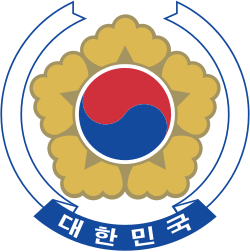Background
The Fourth Republic of South Korea, or the 'Restoration Regime,' was established after the October Restoration in October 1972. However, there was increasing resistance from opposition forces and student protesters after Emergency Measures No. 1 [3] [a] and No. 4 [4] [b] were lifted in August 1974. When the New Democratic Party, the largest opposition party at the time, elected 47-year-old Kim Young-sam as its president at its 22 August convention, [5] [c] the party abandoned its former stance of cooperation with the government to actively pursue constitutional amendments and democratic restoration. On 27 November the National Congress for the Restoration of Democracy was launched, composed of more than 60 people from the political, religious, academic, media and legal circles. Opposition parties and the private sector began working together to promote a movement to repeal the new constitution and democratize the country through constitutional amendments.
Opposition to the Restoration Regime continued to increase, and as the degree of political turmoil intensified, President Park Chung-hee unexpectedly issued a special statement on 23 January 1975, announcing that a referendum would be held to ask the people about their confidence in the Restoration Constitution and the Restoration Regime. In the statement he expressed that the upcoming referendum would not just be a vote of confidence in the constitution, but also for him as president. He declared that in the event that voters favored abolishing the constitution, he would view it as a lack of confidence in his presidency and promptly step down.
Opposition parties expressed their opposition to the referendum, pointing out that the referendum law made it nearly impossible to campaign for or against the referendum until the day before the vote, and that it excluded people affiliated with political parties from observing the voting or the counting of ballots. Opposition parties and protest movements thus boycotted the referendum.
This page is based on this
Wikipedia article Text is available under the
CC BY-SA 4.0 license; additional terms may apply.
Images, videos and audio are available under their respective licenses.
